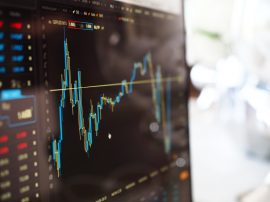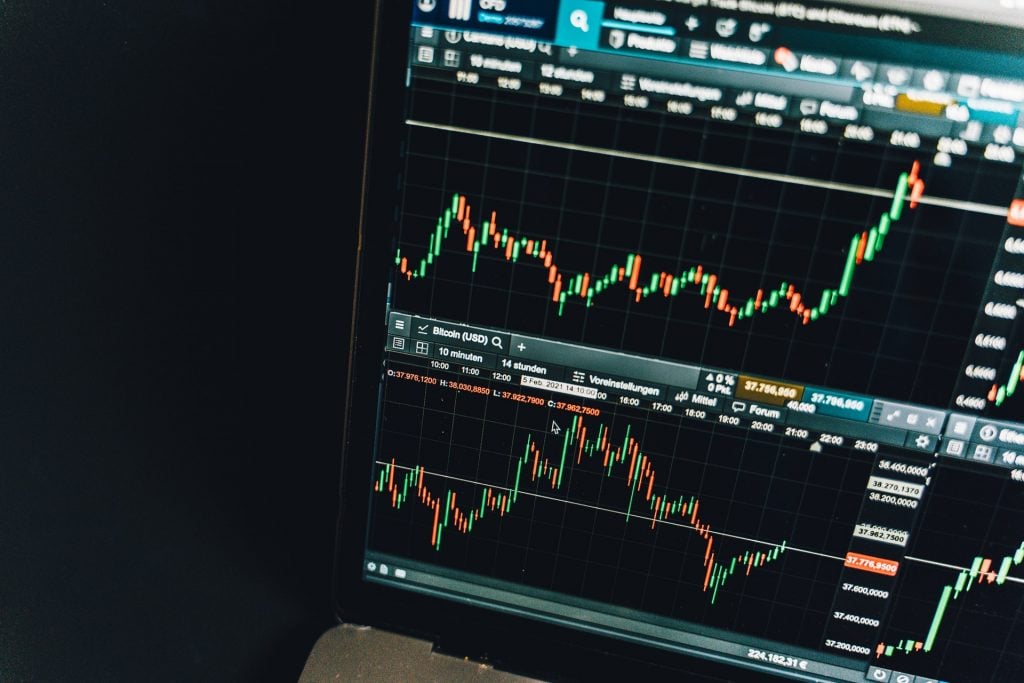
You can’t be blamed for feeling a little anxious about the stock market over the last couple of years — especially in the first few weeks of 2022.
After more than a decade of unprecedented growth, the stock market hit a snag in March and April of 2020 as the first wave of the coronavirus pandemic hit. Declines were much more quickly resolved in the summer of 2020, and 2021 proved to be a decent year with solid gains.
But what’s happening now? The stock market experienced a precipitous drop in value on January 24, only to end the day slightly up after a furious rally. The very next day, all major indexes — Dow Jones, S&P 500, NASDAQ, and Russell — closed significantly down after a series of long-standing economic concerns.
Investors have terms for extended periods of market growth or decline — “bull” and “bear” markets. As tends to happen in wildly fluctuating news cycles, many onlookers right now are asking, “How long will this bull market last? And is a bear market coming?”
In this article, our experts will look into these two animal-centric stock market conditions and try to give a realistic answer to the question, “When will the bull market end — and when is the next bear market?”

What Are Bear and Bull Markets?
“Bull” and “bear” markets are not official, ironclad terms to describe certain stock market conditions. The terms have loosely the same weight as a poster advertising a certain movie as a “Box Office Hit” — it kind of depends on who you ask.
With that being said, there are at least commonly accepted, somewhat formal definitions of bull and bear markets, and they have to do with a common percentage: 20%.
Bull markets are extended periods in which stock market prices across the board have gained in value by at least 20% from the most recent downswing. The last bull market lasted from 2009 — after the global financial crisis of 2007 and 2008 — until the COVID-influenced panic in March 2020 sent share prices down quickly.
Bear markets are exactly the opposite. They’re times when overall stock prices have fallen more than 20% from their most recent highs. The effects of a bear market can be consequential as the gross domestic product falls, and some companies may be forced to lay off workers to compensate for declining market value.
Bull markets generally last much longer than bear markets. One could argue that the COVID-spun bear market of 2020 was more like a correction: by summer, the stock market had returned to profitability, and a bull market returned.
On average, a bear market lasts only around ten months, while a bull market is more likely to span years or even decades.
However, bear markets can endure for a lot longer than people are comfortable with. The longest bear market, during the Great Depression, lasted 61 months between 1937 and 1942. Despite their usual relative brevity, bear markets can upend the economy and put it in a precarious state.
Naturally, stock market investors are wary when certain indicators appear — especially more than one or two at a time — that threaten to end a bull market and send indexes into bear territory.
They feel it necessary to strategize for an oncoming bear market and try to gauge when it’s most likely to hit. This planning can be difficult after relative contentment with steady, continued growth.
Are We in a Bear or Bull Market? Some Common, Troubling Signs
Are we in a bear or bull market? Currently, it’s a bull market. But when will this bull market end? What signs are investors most nervous about? Historically, they include some of the following.
Inflation
Prices for consumer goods and services are always on the rise, even in bull markets. But when inflation rates go up sharply over a shorter defined time, consumers may cut back their spending and delay buying items they need. This saving slows down the economy, which slows company growth and can be a factor driving a bear market.
Of all of the factors in the current economy, it’s the US’s recent inflation rates that are causing the most concern. Month-to-month inflation has risen by at least 5% every month since May 2021 and hit a nearly 40-year record in December at 7%. The annual 2021 inflation rate of 4.7% was the highest since 1990.
With continued supply-chain issues and lingering pandemic effects, investors are nervous these inflation rates may remain high for an extended time.
Declining Consumer Confidence
A side effect of inflation and a worrisome sign in and of itself is when consumers aren’t spending as much as they used to. Shoppers drive two-thirds of the American economy, so the Consumer Confidence Index is thought of as a reliable barometer of economic health.
The most recent report, from December 2021, showed that consumer confidence was still in fairly good shape. But that doesn’t account for what may happen in 2022, especially with the inflation concerns.

Higher Interest Rates and Borrowing Costs
For years, interest rates in the US have hovered remarkably close to the 0% mark. This was necessary, according to most analysts, to spur economic growth after the recession of 2007 and 2008.
Real estate owners, in particular, took advantage of low rates to finance new land and home purchases more easily. The Federal Reserve also kept rates low during the COVID economic downturn.
But now, the Fed seems intent on bringing interest rates back up — potentially to 4% by the end of 2022, according to experts. With money becoming more expensive to borrow, large sectors of the financial marketplace may experience a temporary slowdown.
The good news is that the Fed leaked this information late last year to give investors a chance to prepare for it, and they plan on staggering the interest rate hike throughout the year to soften the blow. The bad news is that it’s almost certainly coming, barring a widespread economic disaster that would force them to forestall the increase.
Worrisome Stock Market Reports
When blue-chip, top-dollar stocks show new signs of weakness, and when most stocks are hitting their lowest share prices in years, it could indicate a bear market in the short- or medium-term future.
Higher Unemployment
Bull markets predominate when more Americans are employed. But when the unemployment rate goes up, consumers spend much less. Businesses are also unable to hire or keep workers, which can lead to long-term consumer malaise.
So Are We In a Bear Market?
It’s hard to say. Certainly, some of the classic indicators of a bear market are manifesting now.
Inflation is running high. The Federal Reserve has said interest rates increases are in the cards. While unemployment figures are low, many reports say there are more jobs open than there are qualified or willing candidates. Most tellingly, the stock market has gotten off to a rocky start in 2022.
It’s always good to prepare as if a bear market is imminent. Investigate some of the standard investment strategies that have gotten investors through bear markets in the past — short-selling, turning to high-yield dividend stocks, shoring up holdings in value stocks, buying call options, and writing covered calls.
But most importantly, don’t panic. The stock market has endured tough times in the past. It’s a resilient force that rebounds more sharply than it declines. Keep that in mind and keep your emotions in check when a bear market hits.

Navigate Through Tough Times with Gorilla Trades
Gorilla Trades can help you make it through the next bear market with our data-driven, time-tested stock picks. To find out more, sign up for a free trial.
